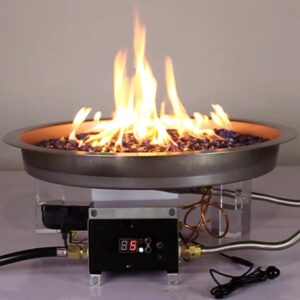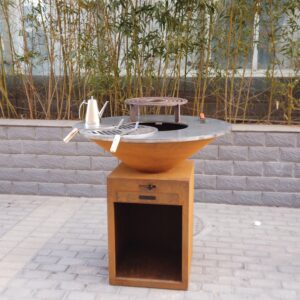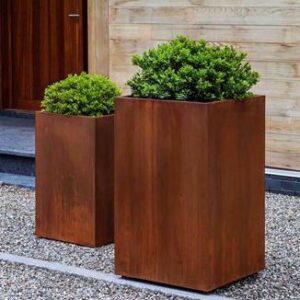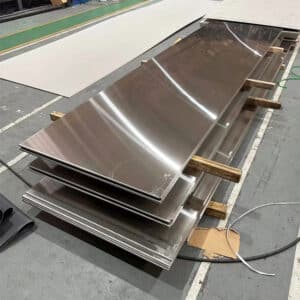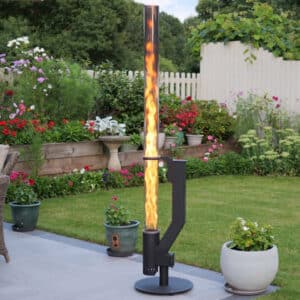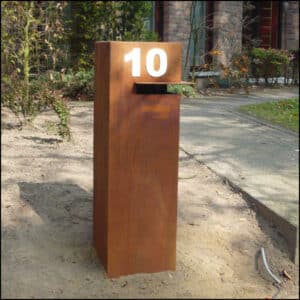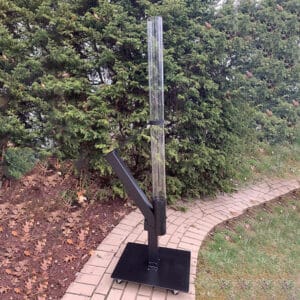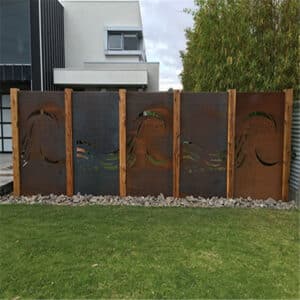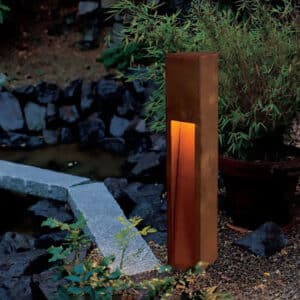When it comes to designing a garden or green space, the planter you choose matters just as much as the plant itself. From modern landscapes to cozy balconies, planters influence aesthetics, durability, and even plant health. In this guide, we compare Corten steel planters, ceramic pots, and plastic containers across multiple factors to help you choose the best material for your indoor or outdoor space.
1. What Are Plantadores de aço corten?
Corten steel, also known as weathering steel, is a corrosion-resistant steel alloy that forms a protective rust-like patina when exposed to the elements. This rust layer isn’t just aesthetic — it acts as a seal against deeper corrosion, making Corten steel a popular choice for outdoor applications, especially in landscaping and architecture.
✅ Advantages:
- Long-lasting & low-maintenance: Can withstand outdoor weather for decades.
- Modern, rustic appearance: The natural rust finish adds character and texture.
- Heavy and stable: Ideal for large plants or windy environments.
- Customizable: Often used in upscale commercial or residential projects.
⚠️ Considerations:
- Rust runoff may occur during the initial stages of weathering.
- Higher cost compared to ceramic or plastic pots.
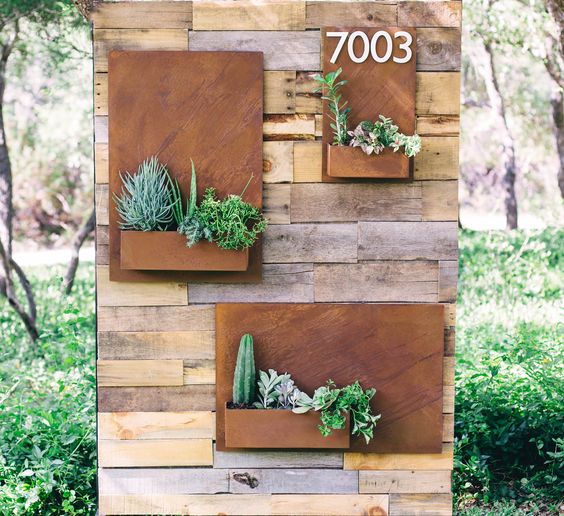
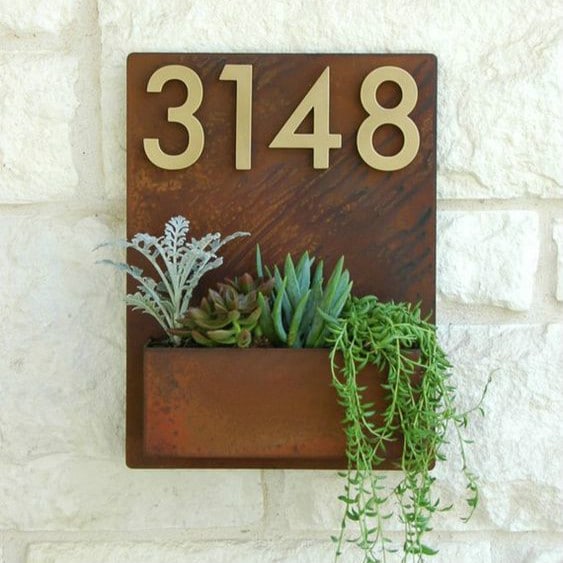
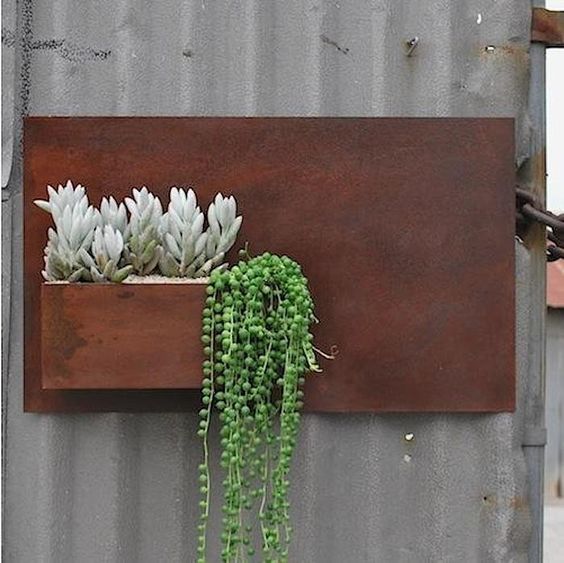

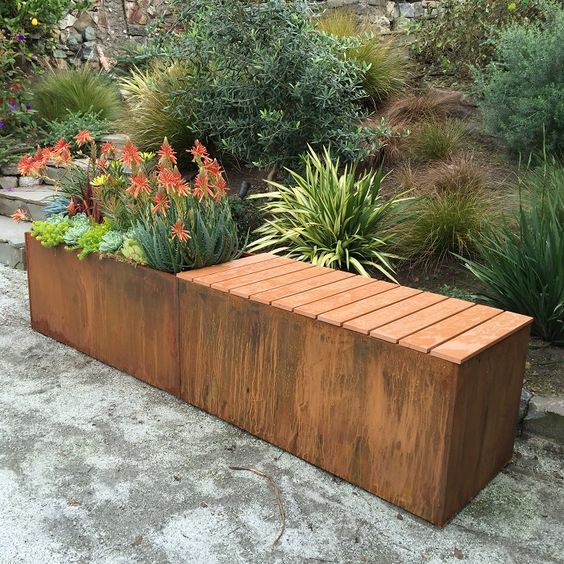
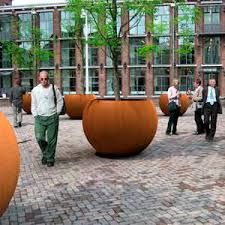
2. Ceramic Pots: Classic and Decorative
Ceramic pots are a timeless option. They are crafted from clay, fired at high temperatures, and often glazed to create decorative finishes.
✅ Advantages:
- Excellent breathability promotes airflow and healthy root systems.
- Highly decorative: Available in endless colors, textures, and shapes.
- Moderate weight: Easier to move than steel, yet sturdy enough for indoor/outdoor use.
⚠️ Considerations:
- Fragile: Prone to cracking or shattering, especially in cold climates.
- Limited weather resistance: Not ideal for regions with freeze-thaw cycles.
- Shorter lifespan when used outdoors continuously.
3. Plastic Pots: Lightweight and Budget-Friendly
Plastic planters are among the most common and affordable options, especially for new gardeners or temporary installations.
✅ Advantages:
- Cost-effective: Great for bulk planting or quick setups.
- Lightweight: Easy to rearrange or bring indoors during extreme weather.
- Versatile designs: Can mimic ceramic or stone finishes at a lower cost.
⚠️ Considerations:
- Not environmentally friendly: Often non-recyclable, contributing to plastic waste.
- Low durability: Sun exposure can lead to cracking or fading over time.
- Lack of premium aesthetics: May not fit in upscale or modern design schemes.
4. Comparison by Use Case
| Use Case | Recommended Material | Why |
|---|---|---|
| Luxury commercial landscaping | Aço corten | Durable, premium look, and customizable shapes |
| Indoor decor | Ceramic | Aesthetic variety and good for houseplants |
| Balcony or temporary setup | Plastic | Budget-friendly and easy to relocate |
| Harsh outdoor climates | Aço corten | Withstands rain, wind, snow, and extreme temperatures |
| Small-space gardening | Ceramic or plastic | Lightweight and flexible for frequent movement |
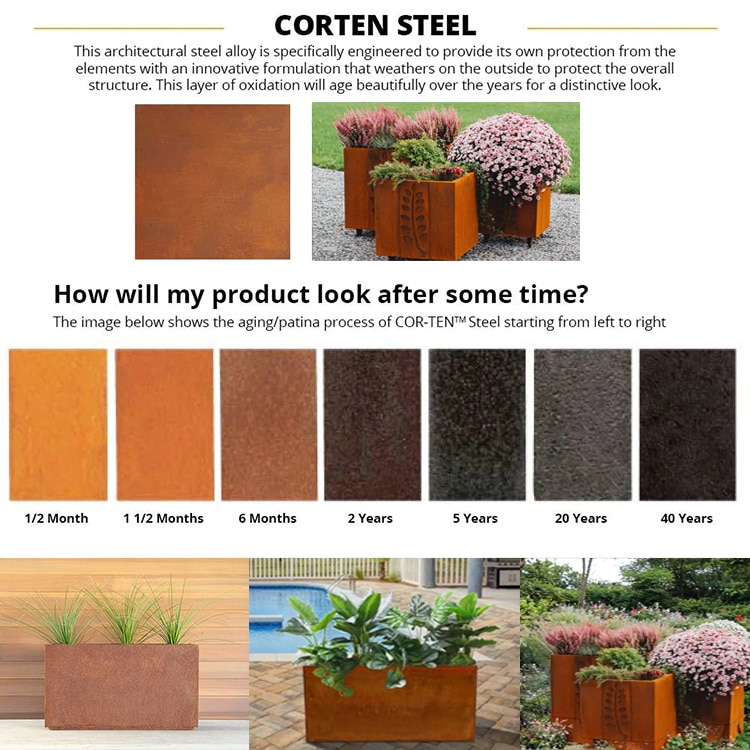
5. Sustainability Considerations
If sustainability is a priority, Corten steel is an excellent investment. While the upfront cost is higher, its longevity and full recyclability make it a more eco-conscious choice in the long run.
By contrast, plastic planters are typically not biodegradable and have a limited usable life. Ceramic pots are more natural, but due to fragility and short outdoor lifespan, they may need to be replaced more often.
6. Final Thoughts: Which Planter Is Right for You?
- Choose Corten steel if you value durability, modern design, and long-term investment.
- Go for ceramic if you prefer decorative options for indoor or semi-protected outdoor spaces.
- Use plastic when flexibility, low cost, and temporary setups are the priority.
Selecting the right planter material depends on your environment, the types of plants you have, your aesthetic goals, and your budget. By understanding the strengths and limitations of each material, you can make a smart, sustainable, and stylish choice.
PERGUNTAS FREQUENTES
Q1: Will Corten steel planters stain my patio?
A: During the initial weathering process (typically the first few months), Corten steel may produce rust runoff. It’s advisable to place them on gravel, dark pavers, or use a drip tray if you’re installing them over light-colored surfaces.
Q2: Are ceramic pots good for outdoor use?
A: Yes, but with caution. While ceramic pots offer breathability and visual appeal, they can crack in cold weather due to moisture freezing inside the clay. Unglazed terracotta is especially prone to damage in winter.
Q3: Is plastic a safe material for growing vegetables?
A: Most commercial plastic pots are safe, but it’s best to check for BPA-free or food-grade plastic if you’re growing edible plants. Also, avoid older pots that might degrade under sunlight.
Q4: Do Corten steel planters get too hot in the sun?
A: Corten steel can retain heat, especially in direct sunlight. While this is generally not an issue for mature outdoor plants, it’s wise to monitor soil moisture and avoid placing them where overheating might harm sensitive roots.
Q5: Can I paint Corten steel planters to match my decor?
A: It’s not recommended to paint over Corten steel, as its signature look and rust patina are key to its protective layer. Painting may interfere with its weathering performance.
Q6: How long do Corten steel planters last?
A: With minimal care, Corten steel planters can last 20 years or more, even in harsh climates. They require no sealing, sanding, or painting.

